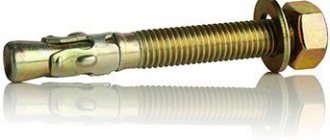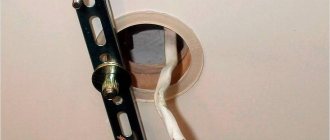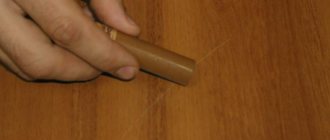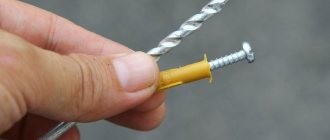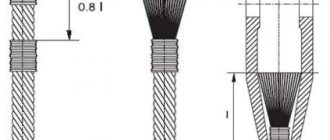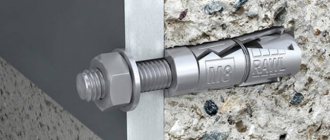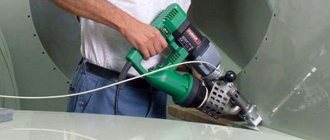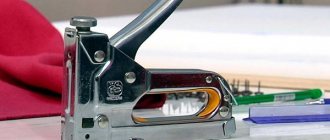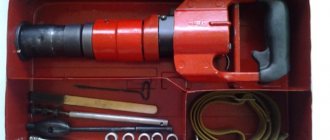All summer residents are familiar with the benefits of durable and high-quality greenhouses. This also applies to other structures made of polymer. But to obtain a high-quality result, just purchasing polycarbonate sheets will not be enough. You also need to take care of the fasteners. One option is a thermal washer for polycarbonate.
Proper use of thermal washers in compliance with all recommendations will allow you to achieve the desired result - your structure will be strong and reliable. Thermal washers are an opportunity to eliminate several problems at once related to heat loss, leakage, or dust or small debris getting into the cavities of the polymer.
Thermal washer for polycarbonate
Features of polycarbonate
When working with polycarbonate, the methods inherent in conventional roofing materials are not suitable. In this case, some of its features should be taken into account.
Cellular polycarbonate
- The performance of polycarbonate differs significantly from the characteristics of materials of natural origin. This is due to the fact that polymer plastic is obtained as a result of organic synthesis.
- Polycarbonate is highly durable, so working with it requires high-quality tools.
Technical characteristics of polycarbonate
- When working with polymer you should be extremely careful. High strength does not make it invulnerable, as it remains very fragile.
- The optimal temperature range for working with this material ranges from -45 to +120 degrees. Any temperature movement outside the range will make working with polycarbonate more difficult. When exposed to extreme temperatures, the material will break down.
- The coefficient of thermal expansion of polycarbonate exceeds 1.5 percent, which makes some changes in the way it is attached. If sheets are tightly fastened at low temperatures, they can rupture, and at high temperatures they can swell.
- The appearance of polycarbonate is very attractive, so you need to use fasteners that will not affect its aesthetic qualities.
- The fastening elements used must have a high level of anti-corrosion protection. This is due to the fact that they will be exposed to weather influences.
Polycarbonate fastening
Fasteners must have anti-corrosion protection
There are a large number of work requirements, but thanks to modern technologies, there is an excellent solution to “fastening” issues - the use of thermal washers, with the help of which the problem of point fastening of polycarbonate sheets fades into the background.
Thermal washer for polycarbonate (universal)
Prices for cellular polycarbonate
cellular polycarbonate
Correct fastening
There are a number of features that must be observed when fastening polycarbonate.
- So the hole intended for the washer leg should be three millimeters larger than the size of the washer itself. A larger hole is made so that during temperature changes, when the polycarbonate is deformed, it does not vomit.
- The distance at which the thermal washers should be located from the edge of the material should be about 40 millimeters.
- The polycarbonate is attached to the panel using self-tapping screws, which are inserted into the holes of the washer.
- To ensure that the self- tapping screw does not harm the polycarbonate sheet, it rests against the frame of the supporting structure. Due to the large diameter of the manufactured hole, the panel will move easily in case of temperature changes.
- The sealing ring is installed between the sheet and the washer head.
- When the thermal washers are completely installed, plugs are put on them (sealed).
Thermal washer - what is it?
Thermal washers are special fastening parts used for point fixation of polycarbonate sheets. These elements are used for metal, wood and plastic structures.
Installation of polycarbonate to a metal frame
When developing thermal washers, all the characteristics of the polymer fabric were taken into account, including:
Types of hats
For metal screws, an 8 mm hexagonal head would be an ideal option. Tightening such screws can be easily done with a screwdriver equipped with an attachment for an eight-millimeter nut - a bat. Wood screws can also have a round head that has a groove for a Phillips screwdriver.
Self-tapping screws with a tetrahedral head are not recommended, as they are not intended for multiple twisting and unscrewing
Experts do not recommend using self-tapping screws with a head for a square or shaped screwdriver to install polycarbonate. The grooves in such caps are very thin and are not suitable for numerous twists and turns. During the operation of such self-tapping screws, the caps become unusable very quickly and problems may arise with dismantling the panels.
A square screwdriver tends to pop out of its slot if too much force is applied. In this case, you may accidentally damage the polycarbonate sheet. In addition, this type of self-tapping screws is not easy to use, so their use is also not recommended.
The thermal washer, which is installed between the self-tapping screw and the panel, is a special spacer, the main function of which is to completely seal the connection. Thermal washers protect the plastic from squeezing and deformation. There are several types of spacers: flat and equipped with a special leg, which acts as a pressure limiter on the material.
The thermal washer performs a sealing function when installing polycarbonate with self-tapping screws
Thermal washers with a leg are great for installing thick panels. The leg also allows the sheet to deform under the influence of temperature without damage. The design of the thermal spacer includes a gasket and a cover, which directly ensure the tightness of the connection.
The presence of these components allows you to protect the polycarbonate material, which is hollow inside, from clogging from the inside and from snow, rain or dust getting into the channels. In addition, thermal spacers prevent the formation of cold bridges that appear when installing polycarbonate panels on a metal frame.
Thermal washer design
The design of the thermal insulation washer includes three main parts.
Thermal washer for fastening cellular polycarbonate
- Leg , the length of which can reach 16 mm. In some cases, you can find longer options.
- A special seal that acts as a polymer fastener. It also protects the structure and the sheet cells themselves from moisture getting inside.
- Top plug . People call it a “hat”. The list of tasks of the plug includes improving the appearance of the building (when constructing a greenhouse, the use of plugs gives it a more aesthetic appearance), although many builders forget about this important detail. In addition, the “hats” protect the structure from moisture or debris. In this case, they play the role of a protective cover.
Complete set of thermal washer for polycarbonate
Why are thermal washers needed?
High-quality fastening of polycarbonate to a frame made of any material is always accompanied by the use of thermal insulation washers. Every salesperson in a hardware store knows about this, so when purchasing polymer you should be advised to purchase thermal washers. Their quantity depends on the number of sheets used, but it is better to buy elements with a reserve.
Important! Some people are sure that purchasing thermal washers is nothing more than a waste of money. This is not true, because it is impossible to go broke on such purchases. The standard factory packaging contains 50 elements (their color is the same in the packaging).
Polycarbonate point fixing
Insulating properties
Every summer resident is well aware of the need to maintain temperature conditions in the greenhouse. In winter it is very difficult to do this due to various cracks or leaks between the sheets. In this regard, severe frosts can harm the plants being grown, which greatly complicates the situation. With a correctly installed thermal insulation washer for fastening polycarbonate sheets, this problem can be solved. Moreover, the effect will be much better than when using a homemade seal.
Monolithic polycarbonate - properties and application
To learn everything about the use and properties of monolithic polycarbonate, be sure to read this article! In addition, we strongly recommend reading the material on how to cut polycarbonate with your own hands.
Operational period
If you use regular mounting bolts without thermal washers (bare bolts), then the likelihood of external liquids getting into the cavities of the polycarbonate sheets increases significantly. The term “external liquid” means sap from trees growing above the greenhouse, or rainwater with dust. It is extremely difficult to remove accumulated dirt, because this requires dismantling the structure, washing and blowing with compressed air. In this regard, few people do such cleaning, so all these liquids remain in the sheets forever. This leads to deterioration of the properties of the material and its gradual destruction.
The constructed structure, reinforced with thermal washers, will be much stronger, which will not give strong winds any chance of destroying it. The greenhouse owner does not have to worry about individual sheets of polymer being torn off the structure under the influence of strong hurricane winds.
Thermal washer
Aesthetic side
Although many do not pay attention to this point, the appearance of a polycarbonate structure still plays a big role. A greenhouse will look much nicer in a beautiful design, for which there are thermal insulation washers. When selecting parts to match the color of polycarbonate sheets, the overall picture will remain undisturbed, and the fasteners themselves will be invisible.
Thermal washer
Corrosion protection
Plastic washers can protect metal self-tapping bolts from the formation of corrosive build-ups. This will preserve the appearance and structure for many years. Of course, you can avoid such troubles by purchasing better quality screws. But no one is safe from counterfeiting, because for very decent money you can buy a low-quality product. The situation is similar with the purchase of self-tapping bolts. It’s better not to spend money on expensive bolts, but buying thermal insulating washers is the most effective option.
Plastic washers protect metal screws from corrosion
Prices for thermal washers
thermal washers
Consolidation process
The point fastening method is used to make structures that are large or medium in area. With this type of fastening, the polycarbonate panels must be at least eight millimeters thick. This is necessary to ensure the total mass of the entire structure.
The process of installing sheets on the frame is as follows:
- Sheet cutting. In a room with a small area, you need a hacksaw (in some cases you can use a stationery knife). If the work is done in a larger room, use an angle grinder, which is equipped with a special disk.
- After cutting the sheets, their edges are sanded. This is done so as not to injure your hands when fastening.
Drilling holes. When performing this procedure, the holes must be made with a diameter larger than the fasteners in size. This is necessary so that the fasteners compensate for stress when exposed to heat. Metal drills are used for drilling. The holes should be located at a distance of about 40 millimeters from the edges of the sheets.- Insertion of shock-absorbing pad. Most often, the sheathing is made of metal. Therefore, a gasket is needed to prevent vibrations in the material. It extends the service life of structural elements. A rubber band is used to complete the gasket design.
- Fixing the material. When fastening, there is no need to tighten the screws completely until they stop. To prevent this from happening, it is necessary to use plastic washers.
- Sealing the ends. Self-adhesive tape is used for the upper ends; the ends are covered with a continuous strip. The lower ends are covered with perforated tape. The tape does not create obstacles to condensate drainage.
Types of washers
For the production of thermal washers, various materials are used, differing from each other in various parameters (strength level, transparency and service life).
There are three main materials used in the manufacture of this product:
- stainless steel (stainless steel);
- polycarbonate;
- polypropylene.
The service life of manufactured fasteners may vary. This will depend on the material chosen for production. For example, products made of polypropylene will last no more than 4 years, those made of polycarbonate - up to 15 years.
Steel thermal washers
Stainless steel thermal insulation washers are usually used for work in windy areas. They are also used if the coverage area of the object being constructed is too large. Often steel is installed on a profile made of metal. This gives the structure a beautiful and organic look. The thickness of the thermal washer reaches 0.8 mm, and the diameter is 33 mm. The inner part of the washer, intended for the self-tapping screw, has a diameter of no more than 6 mm.
Thermal washer for fastening polycarbonate metal
The shape of the steel washer is similar to a small plate, in the recess of which there is a polyurethane gasket. This is a very durable material, and therefore durable (such a gasket can last more than 40 years).
Important! The metal of the washer and its size do not guarantee reliable fastening of plastic sheets. Correct construction is important - only this factor can affect the reliability of the structure. To strengthen the coating, it is advisable to screw thermal washers every 20-30 cm.
Alternative option. Thermal washer "Spacer" rubber with a metal ring
Polypropylene thermal washers
Products made from polypropylene are produced in both colored and transparent versions. This allows you to create color harmony when constructing a greenhouse or any other structure made from polycarbonate sheets. The diameter of the fastener, made of polypropylene, is 35 mm, and the height is 12 mm. Polypropylene thermal insulating washers allow the use of self-tapping screws whose thickness is no more than 6 mm.
Polypropylene thermal washers
Among all the advantages of polypropylene washers, it is worth highlighting their low cost and beautiful appearance. But before buying, you need to familiarize yourself with their disadvantages. For example, the material used is “afraid” of ultraviolet rays. Under the influence of ultraviolet radiation, polypropylene gradually deteriorates (complete destruction will take approximately 3-5 years). This will cause the sheet covering to vibrate strongly from the wind, and, as a result, will collapse over time.
It is advisable to use polypropylene washers in places protected from direct sunlight (inside buildings or in shaded areas).
Polycarbonate thermal washers
Products made of polycarbonate are practically not inferior in their characteristics to steel thermal insulating washers.
Polycarbonate thermal washers
Polycarbonate thermal washers have many advantages.
- Aesthetics . Products made from polycarbonate have a beautiful appearance, which allows you to complement the overall design of the structure.
- Optimal washer design . Thanks to this, the connection of polycarbonate sheets is strong, and their structure remains intact.
- Resistance to strong temperature fluctuations . The influence of extreme cold or heat will not allow the material to lose its original qualities.
- Duration of operation . Thanks to protection from ultraviolet rays, the material is able to maintain its structure for 15 years.
Thermal washers with UV stabilizer for structures made of cellular polycarbonate
The design of the polycarbonate washer includes:
- stem (its length should correspond to the length of the sheet);
- ring sealing;
- special cover;
- steel self-tapping screw, the tip of which is coated with a layer of zinc.
The lid plays the role of not only a decorative element, but also protection (it does not let moisture and dust into the product). A special leg protects the sheet from creasing. When twisted, it rests against a metal or wooden frame, thereby preventing overtightening of the fastening element.
Fastening polycarbonate using thermal washers
Frame
You can make a frame for monolithic and cellular polycarbonate from many materials. A wood frame looks very elegant, but when choosing this building material, you need to know that it must be glued, otherwise the entire structure will crack and deform. In addition, almost every year the frame will need to be painted and treated with special protective compounds against insects and diseases. At the same time, you need to remember how to securely attach polycarbonate to a wooden frame.
A frame made of thin-walled profile pipes, which has a long service life and increased strength, is considered more unpretentious.
Aluminum and steel materials are suitable for the frame under sheet cladding. Moreover, the sheathing can be made from steel and aluminum directly on the construction site, using a reliable type of fastener. The aluminum frame is distinguished by its anti-corrosion properties. If its design is correctly calculated, then it will retain its physical and aesthetic properties for many decades. But it is very expensive, so it is rarely chosen.
For quick construction and saving money, you can build a thinner sheathing and cover it with thick sheets. In this case, there will be fewer screw fastenings, which will speed up the installation process. You can also save money and purchase a thin covering, but then the lathing will have to be more frequent.
The choice depends on the following aspects:
- roof type;
- the area where the structure is installed;
- arch size;
- span dimensions;
- thickness of sheet material.
In any case, savings must be effective. For example, if you do not take into account the snow load and install sheets that cannot cope with the mass of snow falling in the region, then the surface will not withstand the overload and savings will lead to large losses.
If they are sheathing an already built structure that cannot be changed, then the thickness of the material is selected based on the frequency of the frame sheathing: the thinner it is, the thicker the material should be chosen.
Installation instructions
Installation must be carried out in compliance with certain recommendations. Violating them will not only move you away from the desired result, but will also lead to damage to the roofing.
How to drill mounting holes
Table. Step-by-step installation of thermal washers.
| Steps, illustrations | Brief description of actions |
| Step 1 | Pre-measure the width of the thermal washer leg. The diameter of the drill used should be slightly larger (about 1-2 mm). |
| Step 2 | Drill a hole in the required location. The recommended distance between the washers is 20-30 cm. |
| Step 3 | Insert the thermal washer into the prepared hole. Its leg should go all the way to the base. |
| Step 4 | Screw in a regular self-tapping screw. The applied force should be small so that the sheet does not bend. If you have overtightened the screw, you can loosen it a little. |
| Step 5 | Close the screw on top with a protective cover (cap). This will allow the holes to be sealed. |
Installation tips and tricks
- It is necessary to drill holes on plastic sheets only at an angle of 90°. This is a prerequisite for using any type of thermal insulation washers. Otherwise, a number of unpleasant moments may arise: damage to the material, distortion of the head, violation of insulation, and so on.
Holes must only be drilled at an angle of 90°
Installing polycarbonate like this is a waste of money!
Installation of polycarbonate sheets using a thermal washer
Important! If you are attaching long panels (from 6 m), then it is advisable to drill holes that have an oval shape. In this case, they should be elongated in the direction of the channels.
The video provides instructions for attaching polycarbonate sheets using thermal washers. The fastening is made to a metal frame.
Choosing a step is the most important stage in frame construction
When installing the frame under the panels, you need to more accurately select the pitch of the sheathing, which depends on the amount of bending of the material, its thickness and the angle of the roof. The roof slope angle cannot be less than 30°. Knowing all the nuances of constructing the frame, you can quickly set the pitch of the sheathing (it is equal to a hundred times the thickness of the material).
For example, for a sheet with a thickness of 4 mm, the step will be 40 cm, for 8 mm - 80 cm. In other words, the greater the thickness of the material, the smaller the step of the sheathing. It should be noted that thick cellular polycarbonate is faster to fasten because the fastener spacing is smaller and the material bends less. For regions with snowy winters, the sheathing pitch is reduced by 10-15%. When a frame with such a step is expensive, it is better to do something different: design the structure in such a way that the snow quickly melts off the roof. To do this, use a roof slope of 30 - 50°. At these degrees, the cellular panels are securely fastened, and the snow melts well.
During the installation process, be especially careful about fastening, which is done using washers. If there are few of them, then the sheet material will not be securely fastened. Given its large windage, there is a possibility of the sheet being torn off by strong winds. But you also don’t need to install a lot of washers, because this will increase the load on the panels, and they may not withstand hot weather and become deformed. The same can happen in a snowy winter, when wet snow freezes onto sheets of material and the load on the frame exceeds the maximum permissible limit, as a result of which the sheet material breaks. But in any case, you need to use washers to ensure the fastening is secure.

